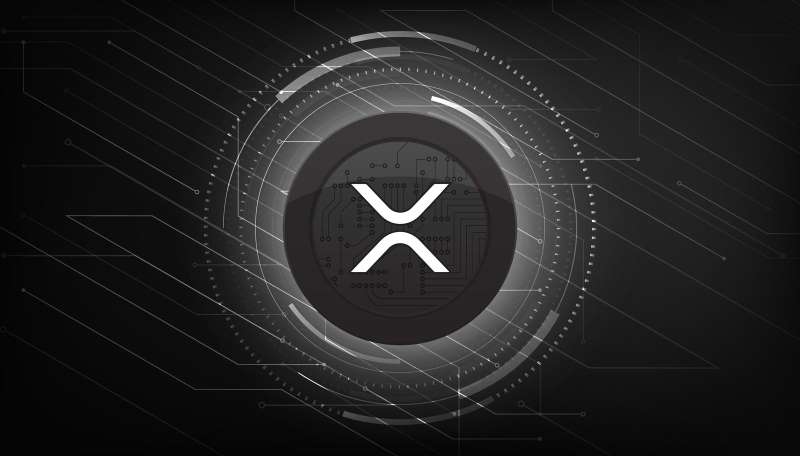Central Bank Digital Currencies (CBDCs) are becoming pivotal in the evolution of monetary systems worldwide, and Australia is actively engaging in this global shift. The Reserve Bank of Australia (RBA) has launched an initiative to explore the potential of a CBDC in the country, known as the eAUD pilot project. The pilot aims to test the use of an Australian-dollar-denominated digital currency that operates on a digital ledger, bridging the gap between conventional fiat currencies and the digital economy.
Understanding the significance of CBDCs requires an examination of their design considerations, the rationale behind their development, and the impact they may have on the economic landscape. The eAUD pilot project is not merely an exploration of technological innovation, but it also addresses the broader implications for the legal and regulatory framework, market structure, and monetary policy. It acts as a stepping stone toward assessing how a digital Australian dollar could coexist with traditional financial systems while offering enhanced efficiency, security, and accessibility.
Key Takeaways
- The Reserve Bank of Australia is trialling a digital version of the Australian dollar known as the eAUD.
- The eAUD pilot project is analysing the potential benefits and challenges of implementing a CBDC within Australia’s existing financial systems.
- This initiative could lead to significant advancements in Australia’s monetary policy, economic framework, and digital currency legalities.
Context and Objectives of CBDC in Australia
The Reserve Bank of Australia (RBA) is poised to explore the transformative potential of a Central Bank Digital Currency (CBDC) for the nation’s economy. By probing the intricacies of digital finance, the RBA aims to reinforce the robustness and efficiency of the financial system, ensuring Australia stays at the forefront of digital innovation.
Economic Considerations
The development of an Australian CBDC, often referred to as the eAUD, is primarily driven by the necessity to adapt to the rapidly evolving digital economy. Economic considerations include fostering quicker and more secure transactions, enhancing financial accessibility, and potentially introducing a new monetary policy tool. The RBA recognises that the digitisation of the Australian dollar could streamline payment systems, sharpening Australia’s competitive edge in a global financial landscape that’s steadily shifting towards digital currencies.
Digital Finance Cooperative Research Centre Role
In navigating the digital financial landscape, the Digital Finance Cooperative Research Centre (DFCRC) plays a crucial role. This institution is a nexus for collaboration between academia, industry, and the government, conducting key research that informs the policy surrounding the development and implementation of a CBDC in Australia. The DFCRC assists in assessing the technological infrastructure vital for a secure and efficient CBDC, embracing innovation while safeguarding the integrity and stability of the Australian financial system.
Australia’s Position on CBDC
Australia’s stance on CBDC is informed by an astute appreciation of the potential benefits and challenges posed by digital currencies. The RBA has been actively investigating how a CBDC could fit within the existing financial architecture, ensuring that any advancements align with the overall policy objectives of the Australian economy. The government’s position supports a cautious but proactive approach to the CBDC, with the ambition to propel the Australian financial system towards a future that harnesses the benefits of digital transformation while mitigating risks through thoughtful regulation and oversight.
Legal and Regulatory Framework
In establishing the Central Bank Digital Currency (CBDC) for Australia, the Reserve Bank of Australia (RBA) plays a crucial role in shaping both the legal and regulatory environment. This ensures that the eAUD would fit within Australia’s robust financial system, aligning with policies set by the government.
Regulatory Considerations
The regulatory considerations for Australia’s CBDC pilot focus on ensuring financial stability and integrity. The RBA and regulatory bodies are tasked with developing frameworks that support innovation while managing risks. They assess the potential impact of an eAUD on the current financial market infrastructure and payment systems. This includes compliance with anti-money laundering (AML) and counter-terrorism financing (CTF) laws. They are also responsible for designing protective measures against cyber threats and assessing the interoperability of eAUD with existing financial technologies.
Legal Aspects of CBDC Implementation
From a legal standpoint, the successful implementation of the eAUD requires a clear understanding of the rights and obligations of all stakeholders involved. This includes defining the legal tender status of the eAUD and whether it would carry the same weight as physical AUD. The legal framework addresses the creation, distribution, and management of eAUD, scrutinising the terms under which it can be issued and ensuring its use conforms to Australian law. Policy development around CBDCs precedes roll-out, with a need for legislation that addresses the governance of digital currencies and their integration into the broader economy.
Technological Infrastructure
The pilot of the eAUD CBDC introduces a cutting-edge framework aimed at reinforcing Australia’s financial system’s efficiency and stability.
Blockchain Technology and Ethereum
The foundational base of the eAUD CBDC is underpinned by blockchain technology, an immutable digital ledger system. This infrastructure provides a robust environment for secure and transparent transactions. In particular, the pilot leverages a permissioned Ethereum platform, an adapted version of the popular Ethereum blockchain, known for its extensive smart contract capabilities, that has been tailored to meet the regulatory and privacy requirements of a central bank.
Employing Ethereum technology allows the eAUD to harness the strengths of smart contract automation and programmability. These attributes facilitate seamless settlement processes, enforcing complex transactional rules with precision.
Quorum
Quorum, a permissioned enterprise blockchain derived from Ethereum, plays a pivotal role as it supports the high-throughput demands of Australia’s digital currency. As a permissioned ledger, Quorum ensures that only authorised entities participate, bolstering security and maintaining a controlled transactional landscape.
Cryptography and Zero-Knowledge Rollups
The technological prowess of the eAUD CBDC is not just limited to its underlying blockchain but extends to advanced cryptographic elements. Zero-knowledge rollups, a scalability solution, are integrated to efficiently batch multiple transactions into a single one. This not only accelerates the throughput but significantly enhances confidentiality, thus addressing both efficiency and privacy.
Starkware, developed by Eli Ben-Sasson, leads the movement in scaling and privacy-preserving technologies like zero-knowledge rollups. Through its innovative use of cryptography, Starkware enhances the eAUD’s capability to handle a massive number of transactions while safeguarding sensitive financial data.
By incorporating such sophisticated technologies, the eAUD CBDC pilot positions Australia at the forefront of financial innovation, tapping into the untapped potential of digital currencies guided by a secure and resilient technological framework.
The eAUD Pilot Project
The eAUD Pilot Project represents a significant step in exploring the practical applications of a Central Bank Digital Currency (CBDC) within Australia’s financial ecosystem. It aims to involve various industry participants and assess the potential benefits of implementing such a digital currency.
Project Scope and Participants
The pilot project, centred around the eAUD, encompasses a range of activities designed to test the functionality and performance of a CBDC within the Australian context. Participants in the project include financial institutions, industry partners, and technology providers. They collaborate to create an environment where the resilience and efficiency of the eAUD can be evaluated in practical use cases, such as programmable payments and tokenized invoices.
Pilot Goals and Framework
Among the primary goals of the pilot is to assess how the eAUD can enhance the payments system, offering potential benefits like improved speed and reduced costs. The framework within which the pilot operates is structured to handle complex transactions, including livestock auctions, while also testing the financial resilience and scalability of the CBDC across various economic sectors.
Mastercard, ANZ, and Canvas Digital Engagement
Mastercard, ANZ, and Canvas Digital have emerged as key industry participants in the eAUD pilot. Their engagement provides valuable insight into the integration of the CBDC with existing payment systems and proprietary platforms. They are actively involved in exploring innovative payment solutions, such as programmable payments, which could transform how traditional transactions are conducted. This trio’s role is crucial in evaluating the eAUD’s interoperability and adaptability within the dynamic landscape of digital finance.
Economic Impact and Future Potential
Exploring the economic impact and the future potential of the Australian eAUD CBDC Pilot reveals how it stands to influence the Australian market and drive innovation, along with new business opportunities.
CBDC Influence on the Australian Market
The introduction of a Central Bank Digital Currency (CBDC) in Australia represents a significant transformation in the payments system and the broader economy. Financial institutions, particularly commercial banks, may find the real-time transaction capabilities of a CBDC alter the current operational landscape. With the ability to facilitate secure and instant payments, a tokenised CBDC could enhance the resilience of the financial system, as well as potentially change how assets like livestock or real estate are exchanged in the digital economy.
Innovation and Business Opportunities
For fintechs and other digital platforms, the CBDC may provide a plethora of opportunities to generate innovative financial products. While crypto assets can lack stability and operate on a foundation independent of traditional financial systems, a CBDC offers a government-backed digital money with a clear value proposition. The pilot also presents potential for off-line payments and foreign exchange transactions, enabling businesses to explore new models for trading, such as atomic settlement, which may increase transparency and efficiency. Collaboration between public sector agencies and the private sector during the Australian CBDC pilot for digital finance innovation highlights the pivotal role of regulated digitisation of assets and the development of robust business models in a transforming market.
Frequently Asked Questions
Australia is actively exploring a Central Bank Digital Currency (CBDC) with a focus on understanding its operation and possible future influence on financial transactions.
What is the purpose behind Australia’s implementation of a CBDC and how might it impact future transactions?
The primary goal behind Australia’s CBDC, termed as eAUD, is to modernise the financial system and potentially enhance financial transaction efficiency. This digital currency could affect future transactions by providing swifter, round-the-clock payment options, and by allowing for greater programmability of money.
Can consumers currently participate in the Australian CBDC pilot, and if so, how?
Currently, Australia has embarked on research related to a CBDC and is conducting a limited-scale pilot, thus consumer participation may be limited. Details of consumer involvement are generally released by the Reserve Bank of Australia as the project evolves.
What are the potential benefits and risks associated with Australia’s transition to a digital currency?
The potential benefits of the eAUD include enhanced payment efficiency and security, while risks could involve cybersecurity threats and the disruption of traditional banking practices. The design and implications of a retail CBDC are still being scrutinised to mitigate these risks.
How are Australian banks preparing for the integration of a CBDC into the existing financial system?
Australian banks are preparing by collaborating with the Reserve Bank of Australia and other regulatory bodies, as well as investing in technology upgrades and staff training to accommodate the integration of CBDC.
In what ways could programmable money, as part of the CBDC framework, transform the Australian economy?
Programmable money as part of the CBDC framework could introduce new economic models & streamline transactions making them more efficient, precise, and transparent. This innovation has the potential to transform financial services in ways that enhance user experience and financial management.
What mechanisms are in place to ensure the security and privacy of transactions within the Australian CBDC pilot?
Security and privacy are paramount, and the CBDC pilot incorporates the latest encryption and cybersecurity measures to protect transaction data. Additionally, the ethos of a CBDC’s design considers privacy to be a crucial component in its development and operational protocols.










